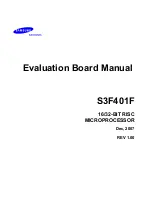
Advantech SOM-ETX Design Guide
5.2.3.4 Stubs
A very common routing mistake is shown in Figure 5.11. Here the designer could
have avoided creating unnecessary stubs by proper placement of the pull down
resistors over the path of the data traces. Once again, if a stub is unavoidable in the
design, no stub should be greater than 200 mils. Here is another example where a
stub is created that could have been avoided. Stubs typically cause degradation of
signal quality and can also affect EMI.
Figure 5-11 Creating Unnecessary Stubs
5.3 Audio Codec 97(AC’97)
SOM-ETX provides an AC’97 CODEC which are compliant to AC’97 rev.2.1 or above
from INTEL Audio Codec ’97 Specification. Signals from SOM-ETX AC’97 CODEC
include three type audio connections, AUXAL/AUXAR referring to line-in pair,
SNDL/SNDR referring to line-out pair, and MIC referring to microphone. They can
connect to standard phone-jack, such as line-in, line-out and mic-in respectively.
5.3.1 Signal Description
Table 5.6 shows SOM-ETX Audio bus signal, including pin number, signals, I/0,
power plane, and descriptions.
Table 5.9 Audio signals description
Pin Signal I/O Description
A38 AUXAL I
Auxiliary A input left. Normally intended for connection to an internal or external
CDROM analog output or a similar line-level audio source. Minimum input
impedance is 5KOhm. Nominal input level is 1 volt RMS.
A42 AUXAR I
Auxiliary A input right. Normally intended for connection to an internal or
external CDROM analog output or a similar line-level audio source. Minimum
input impedance is 5KOhm. Nominal input level is 1 volt RMS.
A40 MIC
I
Microphone input. Minimum input impedance is 5KOhm, max. Input voltage is
0.15 Vp-p.
A46 SNDL O
Line-level stereo output left. These outputs have a nominal level of 1 volt RMS
into a 10K Impedance load. These outputs cannot drive low-impedance
speakers directly.
A50 SNDR O
Line-level stereo output right. These outputs have a nominal level of 1 volt
RMS into a 10K impedance load. These outputs cannot drive low-impedance
speakers directly.
A44 ASVCC P
Analog supply voltage for sound controller. This is an output which is used for
production test
A46 ASGND P
Analog ground for sound controller. Use this signal ground for an external
amplifier in order to achieve lowest audio noise levels.
72
Chapter 5 Carrier Board Design Guidelines
















































